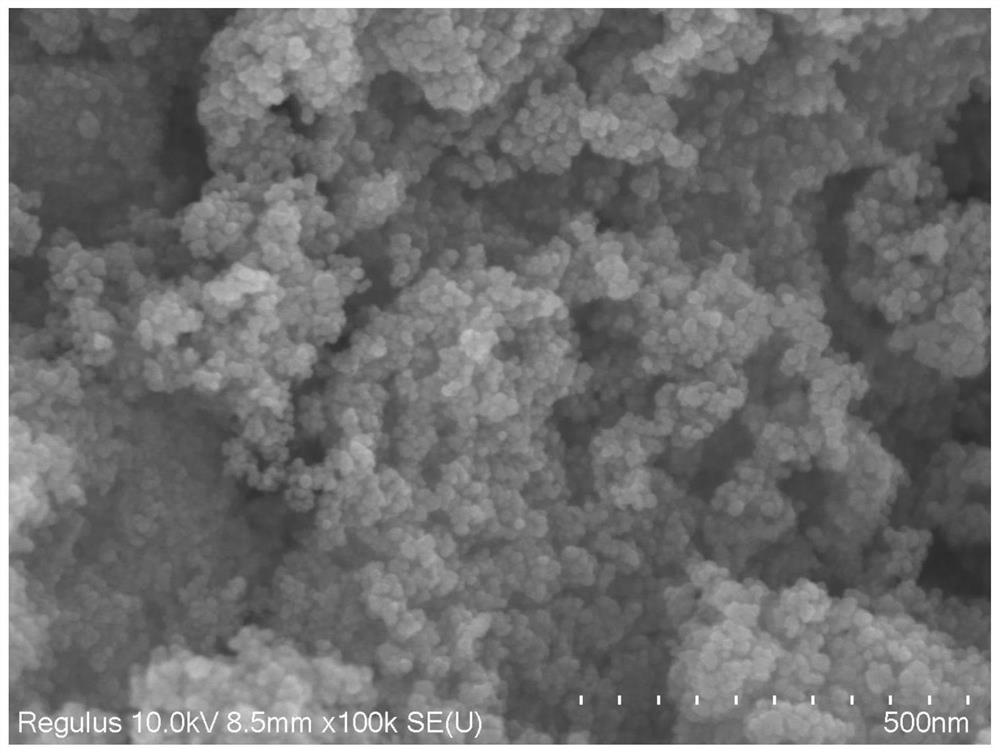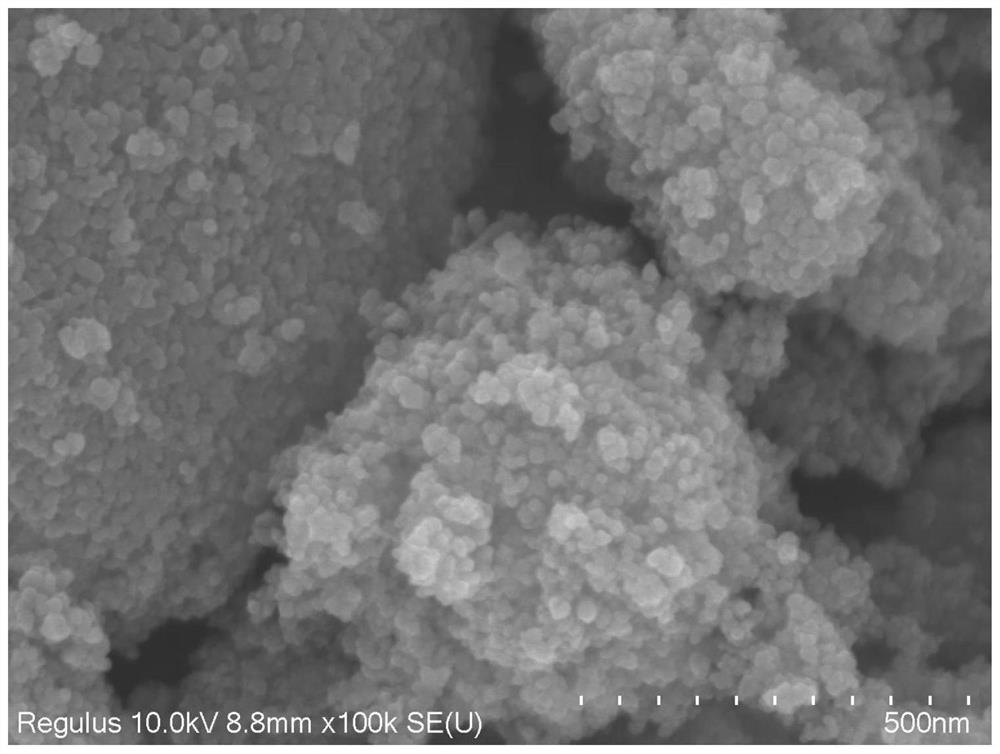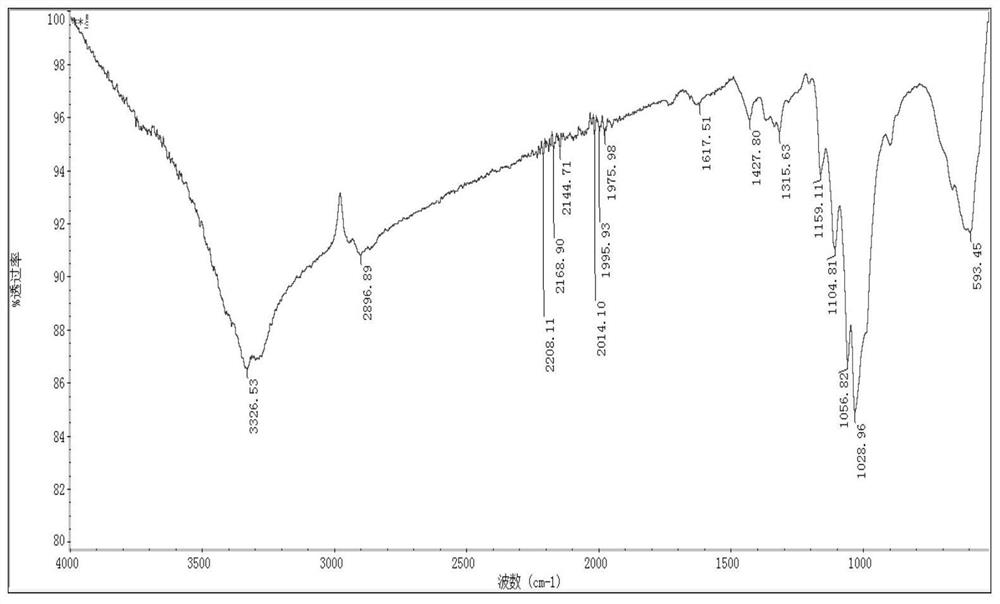Method for catalytically synthesizing phytosterol ester compound by using magnetic immobilized lipase
A technology for immobilizing lipase and phytosterol esters, applied in biochemical equipment and methods, fixed on or in inorganic carriers, fixed on/in organic carriers, etc., can solve the problem of lipase reusability High, low tolerance to organic solvents, etc., to achieve good physical and chemical stability, improve catalytic activity, and high catalytic activity
- Summary
- Abstract
- Description
- Claims
- Application Information
AI Technical Summary
Problems solved by technology
Method used
Image
Examples
Embodiment 1
[0044] (1) Co-precipitation method to synthesize magnetic nano ferric oxide particles, dissolve 4.5g of ferric chloride hexahydrate and 6g of ferrous chloride tetrahydrate in 90ml of deionized water, fully shake and mix evenly at 60°C and 150r / min Finally, add a certain amount of 2mol / L NaOH solution, adjust the pH to 10, continue to stir for 1h, then perform magnetic separation, wash with deionized water until neutral to obtain black solid-magnetic nanometer ferric oxide particles.
[0045] (2) Add 2 g of chitosan into 100 mL of acetic acid solution and stir well to obtain a uniform chitosan solution. The Fe obtained in (1) 3 o 4 Add magnetic nanoparticles into the solution, add NaOH solution after ultrasonication for 0.5h to adjust the pH to 7±0.5, wash with deionized water after magnetic separation and dry to obtain chitosan-wrapped magnetic nano iron ferric oxide particles.
[0046] (3) Dissolve 1.5 g of dialdehyde cellulose into 50 mL of deionized water, and stir well t...
Embodiment 2
[0050] (1) Co-precipitation method to synthesize magnetic nano ferric oxide particles, dissolve 5g of ferric chloride hexahydrate and 6.7g of ferrous chloride tetrahydrate in 100ml of deionized water, fully shake and mix evenly at 60°C and 150r / min Finally, add a certain amount of 2mol / L NaOH solution, adjust the pH to 10, continue to stir for 1H, then carry out magnetic separation, wash with deionized water until neutral to obtain black solid-magnetic nanometer ferric oxide particles.
[0051] (2) Add 4 g of chitosan into 120 mL of acetic acid solution and stir well to obtain a uniform chitosan solution. The Fe obtained in (1) 3 o 4 Add magnetic nanoparticles into the solution, add NaOH solution after ultrasonication for 0.5h to adjust the pH to 7±0.5, wash with deionized water after magnetic separation and dry to obtain chitosan-wrapped magnetic nano iron ferric oxide particles.
[0052] (3) Dissolve 2 g of dialdehyde cellulose into 50 mL of deionized water, and stir well ...
Embodiment 3
[0056] (1) Co-precipitation method to synthesize magnetic nano ferric oxide particles, dissolve 5.3g ferric chloride hexahydrate and 7g ferrous chloride tetrahydrate in 100ml deionized water, fully shake and mix evenly at 60°C and 150r / min Finally, add a certain amount of 2mol / L NaOH solution, adjust the pH to 10, continue to stir for 1H, then carry out magnetic separation, wash with deionized water until neutral to obtain black solid-magnetic nanometer ferric oxide particles.
[0057] (2) Add 4 g of chitosan into 150 mL of acetic acid solution and stir thoroughly to obtain a uniform chitosan solution. The Fe obtained in (1) 3 o 4 Add magnetic nanoparticles into the solution, add NaOH solution after ultrasonication for 0.5h to adjust the pH to 7±0.5, wash with deionized water after magnetic separation and dry to obtain chitosan-wrapped magnetic nano iron ferric oxide particles.
[0058] (3) Dissolve 3 g of dialdehyde cellulose into 50 mL of deionized water, and stir well to ...
PUM
 Login to View More
Login to View More Abstract
Description
Claims
Application Information
 Login to View More
Login to View More - Generate Ideas
- Intellectual Property
- Life Sciences
- Materials
- Tech Scout
- Unparalleled Data Quality
- Higher Quality Content
- 60% Fewer Hallucinations
Browse by: Latest US Patents, China's latest patents, Technical Efficacy Thesaurus, Application Domain, Technology Topic, Popular Technical Reports.
© 2025 PatSnap. All rights reserved.Legal|Privacy policy|Modern Slavery Act Transparency Statement|Sitemap|About US| Contact US: help@patsnap.com



